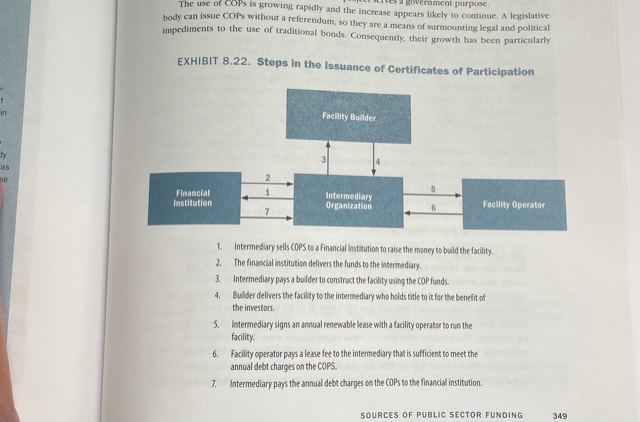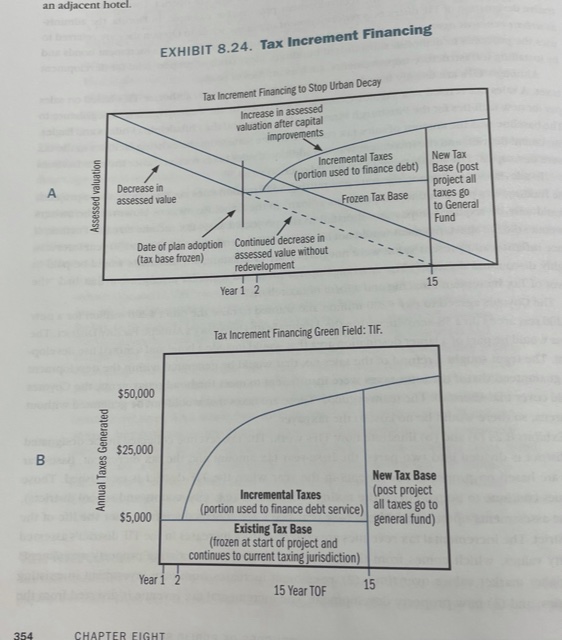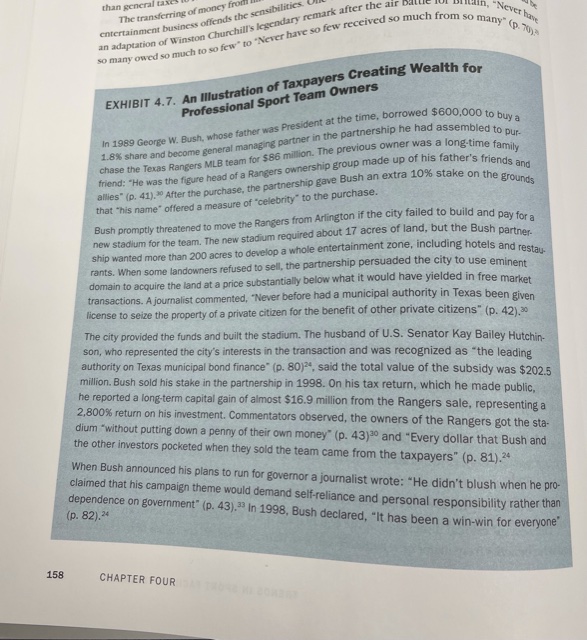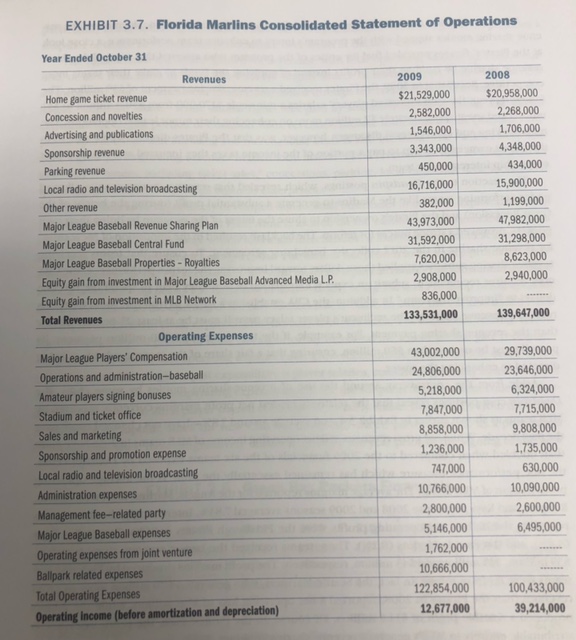Be sure to know all the basics before our interview with Dr. Luy tomorrow!
Two types of money sources discussed here: taxes (can be general or selective), and bonds (government borrows money to pay for things).
Types of taxes:
- General taxes
- Property taxes
- Real property
- Land
- Buildings
- Etc.
- Personal property
- Vehicles
- Stocks/bonds
- Patents
- Etc.
- Real property
- Sales Taxes
- Regressive by nature (property taxes are as well!)
- Can be used to fund specific projects
- Property taxes
- Selective Taxes
- Tourist taxes
- Hotels, car rental, etc.
- Sin taxes
- Alcohol, cigarettes, lotteries, etc.
- Many states have lotteries can be used to fund all kinds of things
- Except Hawaii and Utah!
- Jersey tax
- No one has actually gotten this through a legislature yet though
- Tourist taxes
- Income Tax
- It is actually legal to impose state tax on business done within the state, including sports games!
- Game-Day Surcharges
- Primarily additional cost to tickets and parking at events
Debt Financing: many ways to make the money move.
- Three vital principles for using debt to make things happen:
- Use more time to make the tax burden less onerous
- Use more time to make the financial pain smaller and get the rewards up front, for politics
- Use more time so that the beneficiaries are paying (people who leave or come are paying for what they have access to).
- Note that the debt should still only reach out to the expected end of usefulness of the product, or else you’re paying money for nothing on the back end.
Bonds!
- Straight serial method
- Paying more up front, interest decreases to end
- Graduated serial method
- Paying less up front, more total interest
Bond rating is mentioned, including S&P rating. Ahh memories. I wonder if the USA’s credit score is back up to AAA.
Tax-exempt bonds can only be issues by governments. In 1986 the Tax Reform Act was passed to try and prevent cities from using tax-exempt bonds to pay for stadiums but there were loopholes (of course) and things got messier.
Some blast from the past of sport marketing! Specifically w/r/t getting a new bond passed.
- Market segmentation: different groups behave differently and have different priorities
- Benefit principle: sell based on desire
- Development of a strategic plan: campaign before the referendum to create the best chance for success
Bonds are guaranteed debt. There are also non-guaranteed debt instruments:
- Revenue bond
- Paid specifically from revenues generated by facility
- Certificate of participation
- Public trust model
- A nonprofit or other org acts on behalf of the government entity
- Public-private partnership model
- The local government itself behaves as the intermediary
- Public trust model
- Tax-Increment Financing Bonds
- Paid for by the increase in property values and resulting increase in property taxes
- Super attractive, but be suspicious, people will eagerly assume it can’t fail
- Paid for by the increase in property values and resulting increase in property taxes
- Asset-Backed Securities
- Securitization
- Selling future revenue streams to investors
- Player sale-and-leaseback arrangement
- European football instrument for trying to get more money
- Securitization





